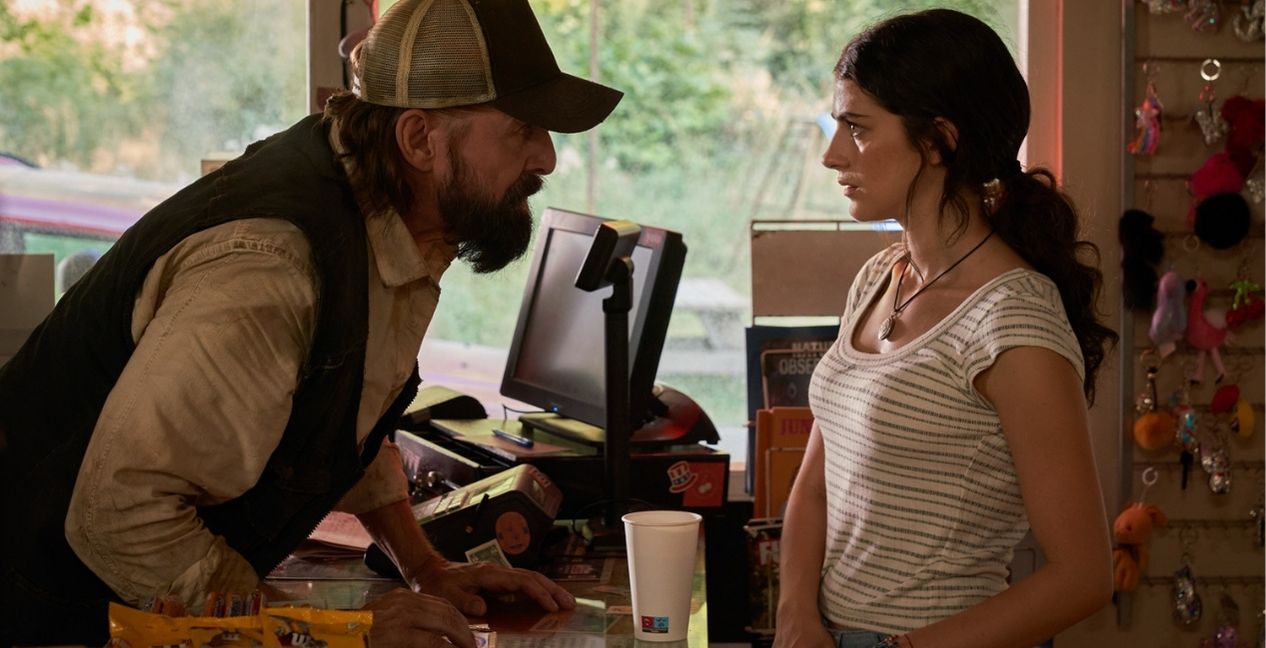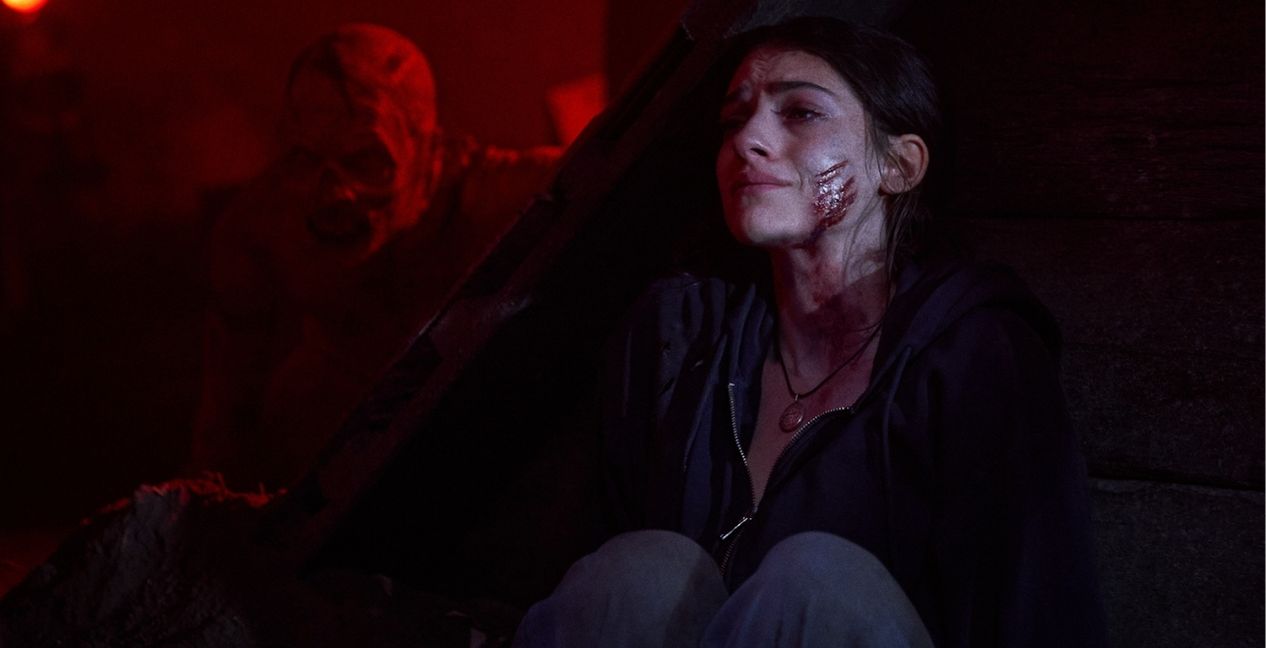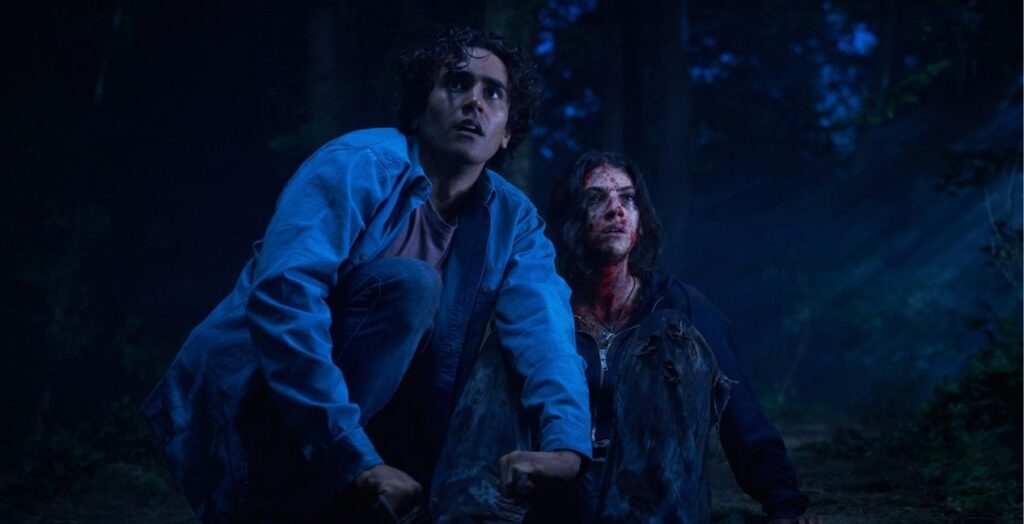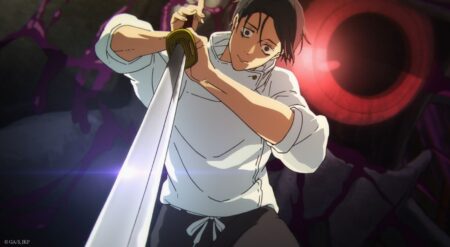Until Dawn is ready to join the ranks of its compatriots. Video game adaptations find themselves in the midst of a renaissance. Recent hits like Arcane, Fallout, and The Last of Us not only succeed in translating the form and feel of their iconic worlds but expand them with the kind of detailed character work that only their new medium can afford. Fellow PlayStation production, Until Dawn, poses a prickly problem in this regard, not because it’s a decade-old game famous for its realistic graphics and cheesy horror cliches, but because of the butterfly effect of choices that make no one playthrough the same.
By losing that sense of agency—and, by proxy, a core part of its identity—Until Dawn’s film adaptation seems to have little chance of justifying its existence, let alone separating itself from the horde of horror films its initial framework is based upon.
Yet, director David F. Sandberg’s rendition wisely strips its source material down to its thematic and conceptual essentials. It manifests as a standalone story set in the same universe that wastes little time getting to the gory meat of its delectable horror premise. In homing in on the most eccentric and wild elements of the game’s mythology, Until Dawn unfolds as an effective and economical slice of horror, often playing as a greatest hits compilation of its source material’s most riveting and inventive ideas.
Penned by producer/writer Gary Dauberman and Blair Butler, the story follows Clover (Ella Rubin) and her friends as they head into the remote Glore Valley, where her sister Melanie (Maia Mitchell) was rumoured to have disappeared more than a year ago. When exploring an abandoned visitor center, featuring a registry full of repeated names and an odd Hourglass contraption, they find themselves brutally murdered. Yet, their story doesn’t end here, as they wake up at the beginning of the night, trapped in an endless loop that forces them to relive the center’s terrors.
Until Dawn wastes little time, diving quickly into the horror of the situation.

The amorphous laws governing this nightmare operate less like the time loops made famous in films like Groundhog Day or Edge of Tomorrow and more like a refresh, in which each killing threat is different and more horrifying than the last. As the gruesome nights and deaths pile up, our protagonists learn they each have a limited number of runs, and the only way to escape is to survive until the titular time of day.
In casting off the baggage of established characters and arcs, Until Dawn gives itself room to focus on its mythology’s ever-changing, minute-to-minute grotesqueries. There’s a new curiosity and monstrosity around each corner, and it feels limitless as a result, constantly remapping the borders of its bloody canvas to throw anything and everything at audiences.
Part slasher, part creature-feature, and part torture, Until Dawn burbles like full-bodied broth, incorporating and reconfiguring the boldest elements of its various subgenres to keep audiences guessing its next, wild swings. It results in a horror experience that not only packs its share of unexpected scares but also acts as a form of twisted wish fulfillment, in which we eagerly await to see the new, wonderfully gory and darkly comic ways each character is savagely dispatched.
Sandberg’s lens relishes the texture and detail of each kill. Whether it be splintered stakes through eyeballs or chunky spontaneous combustions, Sandberg, in tandem with cinematographer Maxime Alexandre, maintains a strong eye for blood-curdling imagery that, thankfully, doesn’t rely on its zany premise to do the heavy lifting. Their careful, confident camerawork makes crafty use of shadows and striking lighting, imbuing each uncanny or delipidated environment with character.
Various subgenres of horror come together to keep audiences guessing.

While far from a technical feat, Until Dawn is visually fleshed out enough to retain a sense of unpredictability and twisted pleasure with each scare. It all coalesces in a sharply staged, glitchy phone montage that combs through our doomed ensemble’s various, inventive deaths in a manner that recalls the most heightened of Cronenbergian body horror.
Such visual language filters through to the clever and efficient world building, seamlessly incorporating unseen cosmic forces, shadowy giants, wendigos and even paranormal hags that become increasingly decrepit by the second. Until Dawn is at its strongest when it doesn’t stop to explain its oddities, allowing audiences to bask in the terror of its law-defying, shape-shifting world.
Though Until Dawn succeeds in weaponizing the tropes and conventions of its genre, it sometimes falls prey to their worst qualities. Its teenage protagonists abound with thin, hemmed-in characterizations—the overbearing ex-boyfriend, the “granola girl,” and the “serial dater”—that quickly turn stale and repetitive.
Despite these limitations, the young ensemble, which features Michael Cimino, Odessa A’zion, Ji-young Yoo, and Belmont Cameli, retains a semblance of personality. Each actor boasts a sharp sense of comedic timing, revelling in quirky one-liners and morbid punchlines. Peter Stormare, who returns as his in-game antagonist Dr. Hill, especially chills and tingles as the world’s slippery and sardonic puppet master.
While Until Dawn can feel a tad too emotionally stunted by the constraints of its genre, it comes out ahead of most of its contemporaries as a horror experience that understands how to keep audiences in on its twisted, gory joke, all the way to its winking final frame. Though choice is the name of the game in Until Dawn, Sandberg’s delicious, hodgepodge of an adaptation never makes us miss the controller.
Until Dawn is in theaters April 25.
Until Dawn
-
Rating - 7.5/107.5/10
TL;DR
Though choice is the name of the game in Until Dawn, Sandberg’s delicious, hodgepodge of an adaptation never makes us miss the controller.








